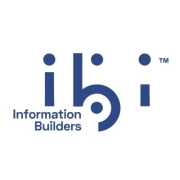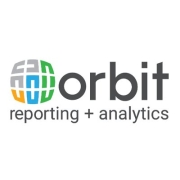Embedded BI integrates analytical capabilities into business applications, allowing users to access real-time insights without leaving their usual workflows. This solution streamlines data-driven decision-making by incorporating intuitive reporting tools directly into enterprise systems.
Embedded BI enhances application relevance by allowing customization and easing access to data insights for users. It supports decision-making processes by providing visibility into critical operations and performance metrics without needing separate analytic tools. This flexibility improves user engagement and productivity, as it seamlessly aligns with existing business processes, minimizing disruption and learning curves.
What features stand out in Embedded BI solutions?In the retail industry, Embedded BI offers insights into customer behavior, product performance, and supply chain efficiencies, helping businesses remain competitive. In healthcare, this solution facilitates patient data analysis and operational efficiency. Financial services leverage real-time analytics for risk management and fraud detection.
Embedded BI helps organizations by streamlining data analysis processes, providing actionable insights within existing systems, and supporting informed decision-making. It empowers users by delivering analytics in a familiar environment, which simplifies adoption and enhances operational efficiency.
| Product | Market Share (%) |
|---|---|
| Tableau Enterprise | 26.6% |
| Qlik Sense | 12.2% |
| QlikView | 11.2% |
| Other | 50.0% |







































BI (business intelligence) tools are a type of application software. They collect and process unstructured data from both internal and external systems, including documents, books, journals, files, health records, emails, videos, images, and other business sources. BI tools are not as flexible as business analytics tools, but they allow users to find information from among amassed data, primarily through queries. They also help to prepare data for analysis so that users can create dashboards, reports, and data visualizations. The results of these analyses assist users in accelerating and improving decision-making, increasing operational efficiency, pinpointing new potentials for revenue, identifying market trends and genuine KPIs (key performance indicators), and identifying new business opportunities.
BI tools are generally used for straightforward reporting of business data and querying. They can combine a wide range of data analysis apps, which may include real-time BI, mobile BI, operational BI, open-source BI, cloud/software as a service BI, collaborative BI, enterprise reporting, ad hoc analysis and querying, online analytical processing (OLAP), location intelligence, and data visualization software. BI tools may also include tools for building BI dashboards.
The benefits of embedded business intelligence include:
Consider embedding analytics in your organization’s products and services for the following reasons:
When choosing an embedded BI tool, consider the following criteria:
Embedded business intelligence (BI) tools are software applications that are integrated into other software applications or platforms to provide data analysis and reporting capabilities. These tools enable users to access and analyze data within the context of their daily workflows, without the need to switch between different applications. There are several different types of embedded BI tools available in the market, each with its own unique features and functionalities.
1. Dashboards and Reporting Tools: These tools provide visual representations of data through interactive dashboards and reports. Users can create customized dashboards with charts, graphs, and other visual elements to monitor key performance indicators (KPIs) and track business metrics.
2. Data Visualization Tools: These tools focus on presenting data in a visually appealing and easy-to-understand format. They offer a wide range of visualization options, such as charts, maps, and infographics, to help users gain insights from complex data sets.
3. Self-Service BI Tools: Self-service BI tools empower non-technical users to explore and analyze data on their own, without relying on IT or data analysts. These tools typically have intuitive interfaces and drag-and-drop functionalities, allowing users to create their own reports and visualizations.
4. Embedded Analytics Tools: Embedded analytics tools integrate BI capabilities directly into other software applications, such as CRM or ERP systems. This enables users to access real-time data and perform analysis within the context of their existing workflows, without the need to switch between different applications.
5. Mobile BI Tools: Mobile BI tools enable users to access and analyze data on their mobile devices, such as smartphones and tablets. These tools provide responsive and user-friendly interfaces, allowing users to stay connected and make data-driven decisions on the go.
6. Predictive Analytics Tools: Predictive analytics tools use statistical algorithms and machine learning techniques to analyze historical data and make predictions about future outcomes. These tools help businesses identify trends, patterns, and potential risks, enabling them to make proactive decisions.
7. Data Integration and ETL Tools: Data integration and extract, transform, load (ETL) tools are used to extract data from various sources, transform it into a consistent format, and load it into a data warehouse or BI system. These tools ensure that data is accurate, complete, and up-to-date for analysis.
In conclusion, embedded BI tools come in various forms and serve different purposes. Whether it's providing interactive dashboards, enabling self-service analytics, or integrating BI capabilities into existing applications, these tools empower businesses to make data-driven decisions and gain a competitive edge in today's data-driven world.
Embedded Business Intelligence (BI) tools are software applications that are integrated into other software systems, such as enterprise resource planning (ERP) or customer relationship management (CRM) systems, to provide users with real-time data analysis and reporting capabilities. These tools enable users to make informed decisions based on the data generated by the underlying system. Here is an overview of how embedded BI tools work:
- Integration: Embedded BI tools are seamlessly integrated into the existing software system, allowing users to access BI functionality without switching between different applications. This integration ensures that the BI tool can leverage the data stored in the underlying system and provide real-time insights.
- Data Extraction: Embedded BI tools extract data from the underlying system's databases or data warehouses. They can connect to multiple data sources, including structured and unstructured data, to gather relevant information for analysis.
- Data Transformation: Once the data is extracted, embedded BI tools transform it into a format suitable for analysis. This may involve cleaning and filtering the data, removing duplicates, or aggregating it to a higher level of granularity.
- Data Modeling: Embedded BI tools create data models that define the relationships between different data elements. These models enable users to explore and analyze the data in a structured manner. Data modeling also helps in creating interactive visualizations and dashboards.
- Analysis and Reporting: Embedded BI tools provide a range of analytical capabilities, such as ad-hoc querying, data exploration, and multidimensional analysis. Users can perform complex calculations, apply filters, and drill down into the data to uncover insights. The tools also offer various reporting options, including predefined templates and customizable reports.
- Visualization: Embedded BI tools use visualizations, such as charts, graphs, and maps, to present data in a visually appealing and easily understandable format. Visualizations help users identify patterns, trends, and outliers in the data quickly.
- Collaboration and Sharing: Embedded BI tools enable users to collaborate by sharing reports, dashboards, and insights with others. They can also schedule automated report generation and distribution to ensure that stakeholders receive up-to-date information.
- Security and Governance: Embedded BI tools incorporate security measures to protect sensitive data. They provide role-based access control, data encryption, and audit trails to ensure data integrity and compliance with regulations.
- Scalability: Embedded BI tools are designed to handle large volumes of data and support a growing number of users. They can scale horizontally by adding more servers or vertically by utilizing more powerful hardware resources.
Embedded BI tools empower users to make data-driven decisions by providing them with timely and actionable insights within their existing software systems. They streamline the process of data analysis and reporting, enhancing productivity and driving business growth.
Embedded business intelligence (BI) tools are powerful software solutions that integrate seamlessly into existing applications, providing users with real-time data analysis and reporting capabilities. These tools offer numerous benefits for businesses, enabling them to make data-driven decisions and gain a competitive edge in today's fast-paced market. Here are the key advantages of embedded BI tools:
1. Enhanced decision-making: Embedded BI tools empower users to access and analyze data within their familiar application environment, eliminating the need to switch between different systems. This enables faster decision-making based on real-time insights.
2. Improved productivity: By embedding BI tools directly into existing applications, users can access relevant data and generate reports without the need for additional training or software. This streamlines workflows and increases productivity across the organization.
3. Customizable dashboards: Embedded BI tools allow users to create personalized dashboards tailored to their specific needs. These dashboards can display key performance indicators, metrics, and visualizations, providing a comprehensive overview of business performance at a glance.
4. Real-time data analysis: With embedded BI tools, users can analyze data in real time, enabling them to identify trends, patterns, and anomalies as they occur. This real time analysis facilitates proactive decision-making and helps businesses respond swiftly to changing market conditions.
5. Self-service analytics: Embedded BI tools often offer self-service capabilities, allowing users to explore data and generate reports without relying on IT or data analysts. This empowers business users to access the information they need, when they need it, reducing dependency on IT resources.
6. Increased data accessibility: Embedded BI tools enable users to access data from multiple sources, such as databases, spreadsheets, and cloud applications, within their application environment. This centralized access to data eliminates silos and ensures that users have a holistic view of information.
7. Scalability and flexibility: Embedded BI tools can scale alongside growing business needs, accommodating increasing data volumes and user demands. These tools are highly flexible, allowing businesses to adapt and customize them as requirements evolve.
8. Cost-effective solution: By embedding BI tools into existing applications, businesses can avoid the costs associated with developing and maintaining a separate BI infrastructure. This makes embedded BI a cost-effective solution for organizations of all sizes.
In conclusion, embedded BI tools offer a range of benefits that enhance decision-making, productivity, and data accessibility. By seamlessly integrating into existing applications, these tools empower users to analyze real-time data, create customizable dashboards, and perform self-service analytics. With embedded BI, businesses can leverage data-driven insights to gain a competitive advantage in today's dynamic market.
Embedded BI significantly enhances user experience by integrating analytics directly into the applications you already use. This means you can access critical data insights without switching between multiple platforms, allowing for a seamless workflow. By having data insights at your fingertips within familiar interfaces, you can make informed decisions quickly and efficiently, boosting productivity and user satisfaction.
What Are the Key Features of a Modern Embedded BI Solution?A modern Embedded BI solution typically includes interactive dashboards, real-time data access, customizable reporting, and integration capabilities with various data sources. It also offers data visualization tools to help you interpret complex data easily. These features enable you to gain deeper insights and facilitate data-driven decision-making processes without requiring extensive IT support.
How Can Embedded BI Enhance Data-Driven Decision Making?Embedded BI enhances data-driven decision making by providing real-time access to data directly within your existing business applications. This integration allows you to analyze and visualize data in context, promoting informed decision-making. It encourages a culture of analytics within your organization, enabling better alignment of strategic goals with operational execution based on reliable data insights.
What Are Common Challenges in Implementing Embedded BI?Implementing Embedded BI can present challenges such as integration complexities with existing systems, data security concerns, and the need for scalability. These challenges require careful planning and collaboration between IT and business units to ensure a smooth integration process. Choosing a solution that aligns with your organization's needs and involves minimal disruption to your workflow is crucial for successful adoption.
How Does Embedded BI Support Customization and Scalability?Embedded BI supports customization by allowing you to tailor reports and dashboards to fit specific business needs. It enables users to create personalized data views and queries, enhancing relevance and usability. Regarding scalability, modern Embedded BI solutions are designed to grow with your business, handling increased data volumes and user demands without sacrificing performance or functionality, ensuring long-term value.